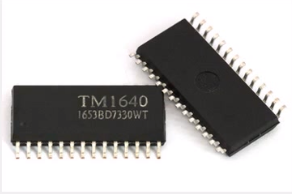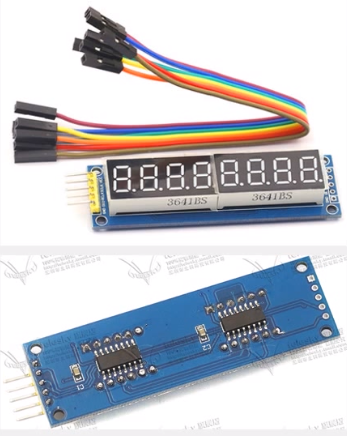数码管
数码管
一、数码管介绍
- LED数码管:数码管是一种简单、廉价的显示器,是由多个发光二极管封装在一起组成“8”字型的器件。

1.1 数码管引脚定义
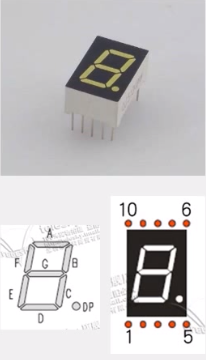
共阴
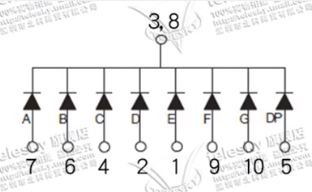
阴极连接在3和8号两个引脚上。
共阳

阳极连接在3和8号两个引脚上。
1.2 四位一体的数码管
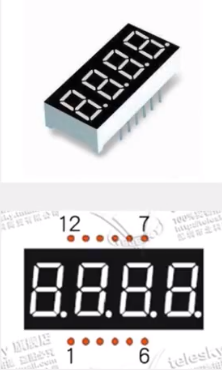
- 共阴
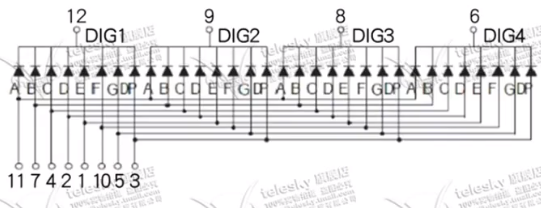
共阳
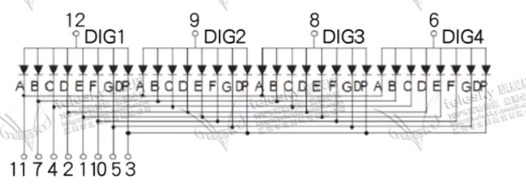
四位一体数码管的特点:同一时刻可以至少一个数码管被选中(点亮),即使选中多个,每个显示的内容也一定是一样的。但是可以利用人眼视觉暂留实现同时显示多个内容。
二、开发板数码管电路分析
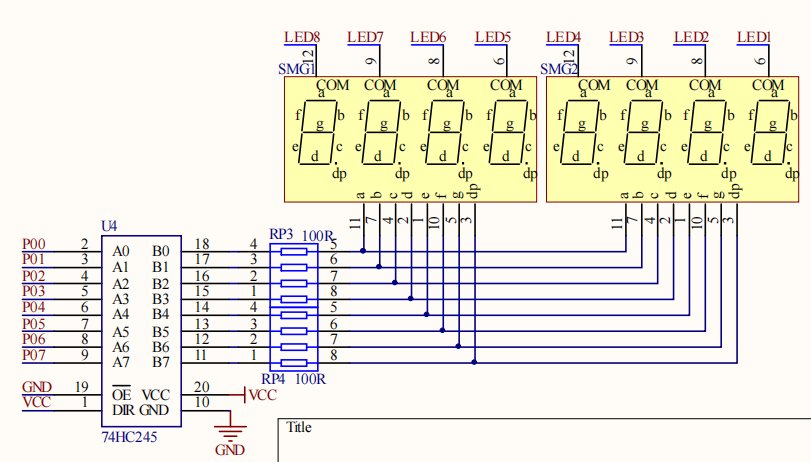
74HC245(八线双向收发器):
- 作用:图中的A0、B0到A7、B7可以理解为是相连的,74HC245这里作为驱动器,如果A0传过来的信号弱了,它也能识别到,并且在B0输出时把信号增强。
- OE:输出使能,控制其是否工作
- DIR:方向控制,信号是A到B传递,还是B到A传递。
- GND:逻辑地
- VCC:逻辑电源
- A0–A7:数据输入/输出
- B0–B7:数据输入/输出
74hc245是一种在单片机系统中常用的驱动器,三态输出八路收发器,它在电路中的作用是:增加
io口的驱动能力,比如说51单片机的io口本身的驱动电流较小但所带的负载很大,这种时候就可以使用74hc245来增强io口的驱动能力。
PR3、PR4:
两个四并一的电阻,防止过载。
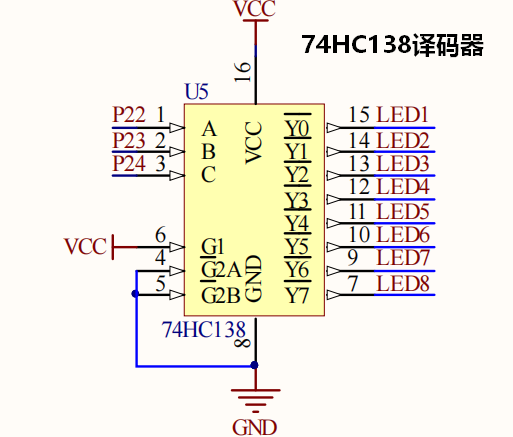
74HC138译码器:
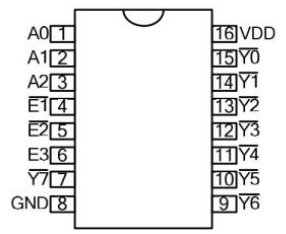
输出口分别与八个数码管的共阴极相连。
| 名称 | 功能说明 |
|---|---|
| Y0–Y7 | 数据输出 |
| A0–A2 | 数据输入 |
| E1、E2、E3 | 使能控制 |
| VDD | 逻辑电源 |
| GND | 逻辑地 |
在我们设计单片机电路的时候,单片机的IO口数量是有限的,有时并满足不了我们的设计需求,比如我们的STC89C52RC一共是32个IO口,但是我们为了控制更多的器件,就要使用一些外围的数字芯片,这种数字芯片由简单的输入逻辑来控制输出逻辑,比如74HC138这个三八译码器。
三、静态数码管
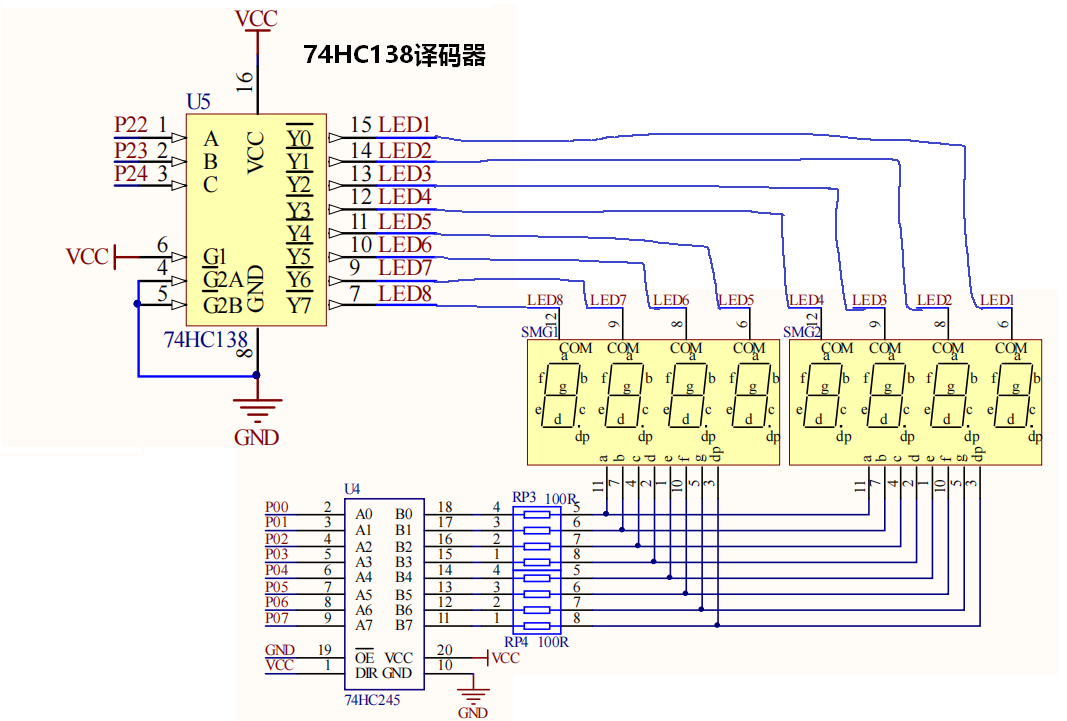
3.1 案例1:让第三个数码管显示数字6
3.1.1 分析:
选中LED3,并且使得LED3中的a、f、e、d、c、d段亮。选中LED3即74HC138译码器输出0010 0000,输入010,即P22、P23、P24分别置0、1、1;使a、f、e、d、c、g段亮,即74HC245中输出1011 1110,即P0置0111 1101(0x7d)。dp为右下角的点。
3.1.2 代码实现:
1 |
|
3.1.2 现象:
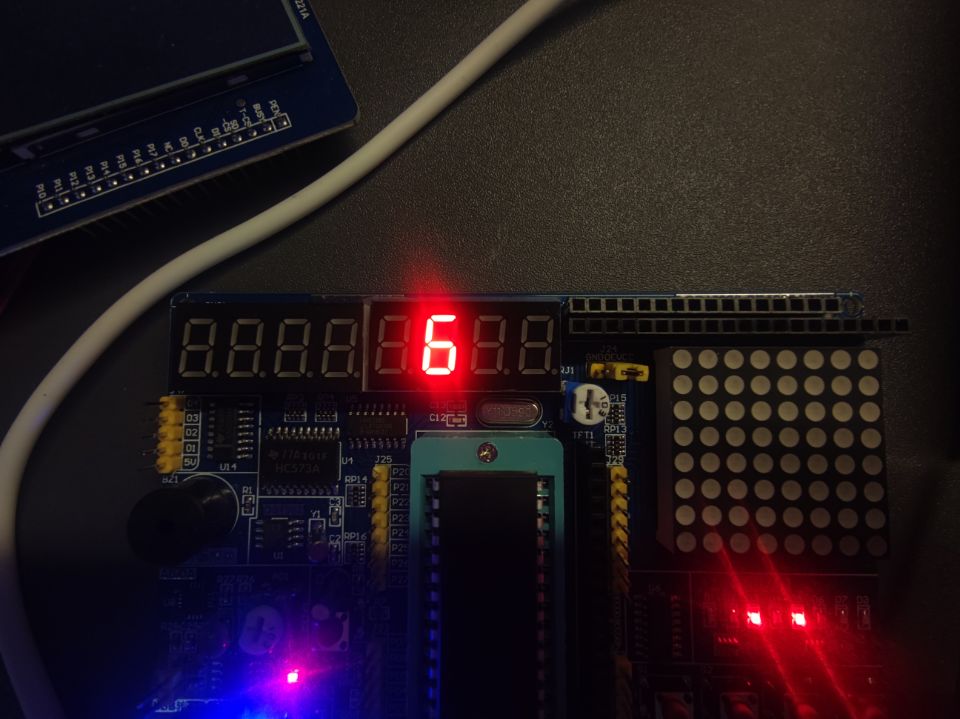
四、动态数码管
由开发板电路图知,八个数码管,不能同一时刻显示不同的字符。
但是我们可以利用快速的切换数码管的显示,给人肉眼一种假象,能够同时显示不同的字符。

4.1 案例1:增加延时200ms
代码:
1 |
|
现象:

4.2 案例2:缩短延时为1ms
代码:
1 |
|
现象:
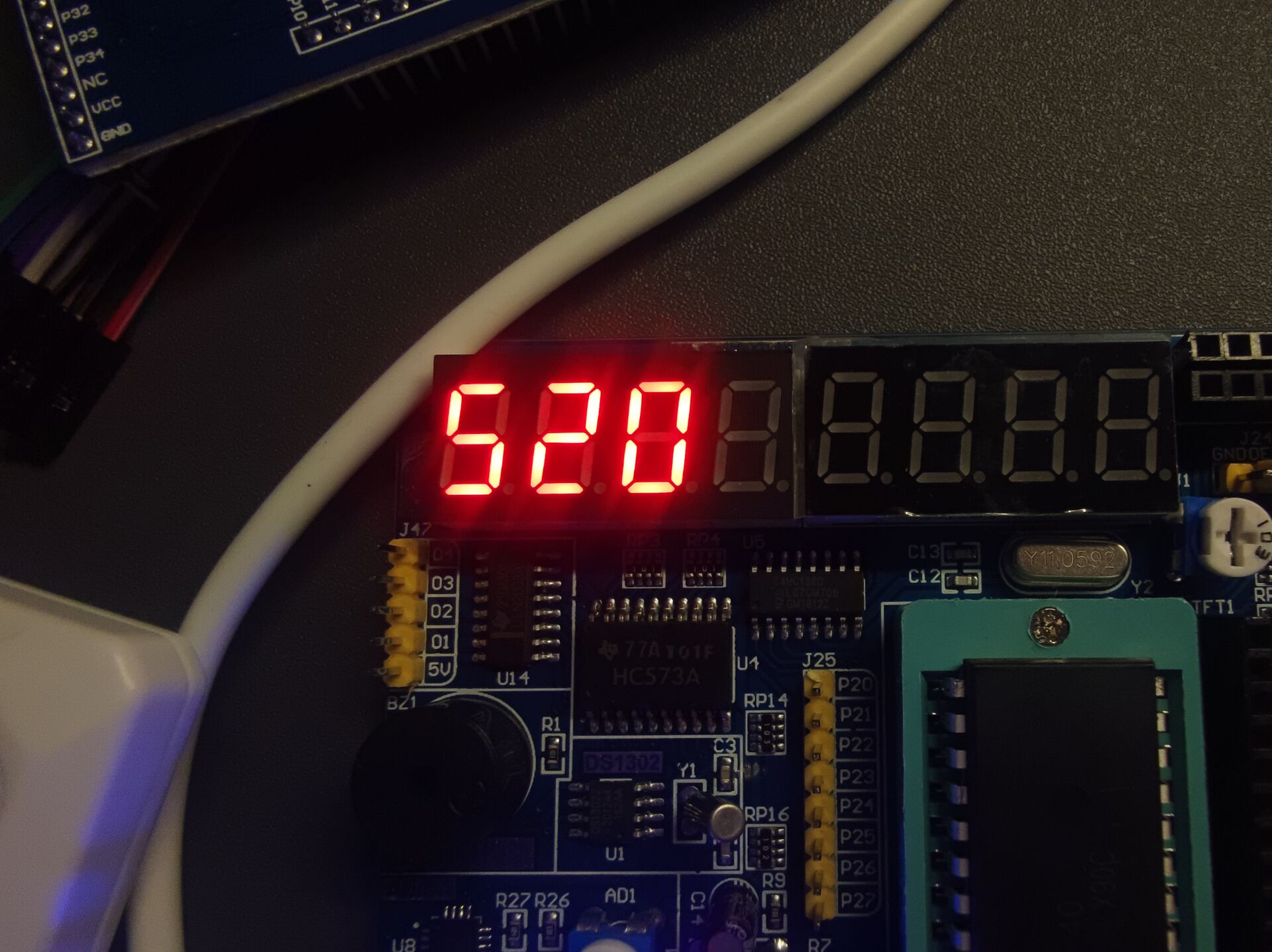
调整相机快门时间和曝光度可以看到闪烁
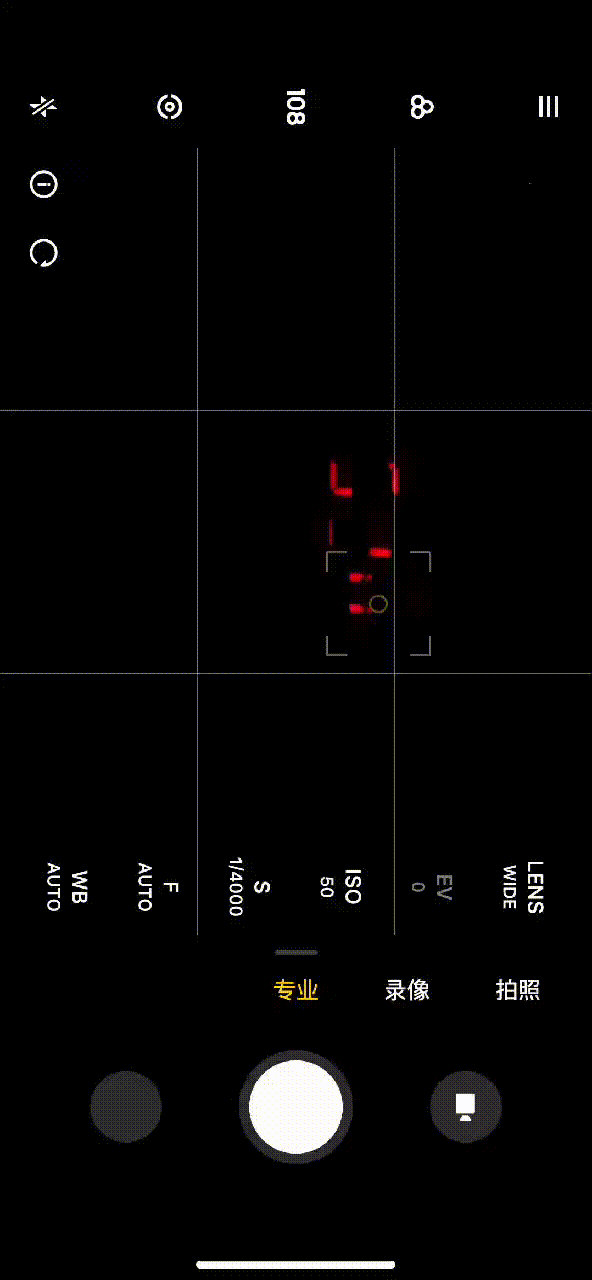
4.3 案例3:去掉延时
在while中不断在8、7、6三个数码管中不停显示5、2、0。
代码:
1 |
|
现象:
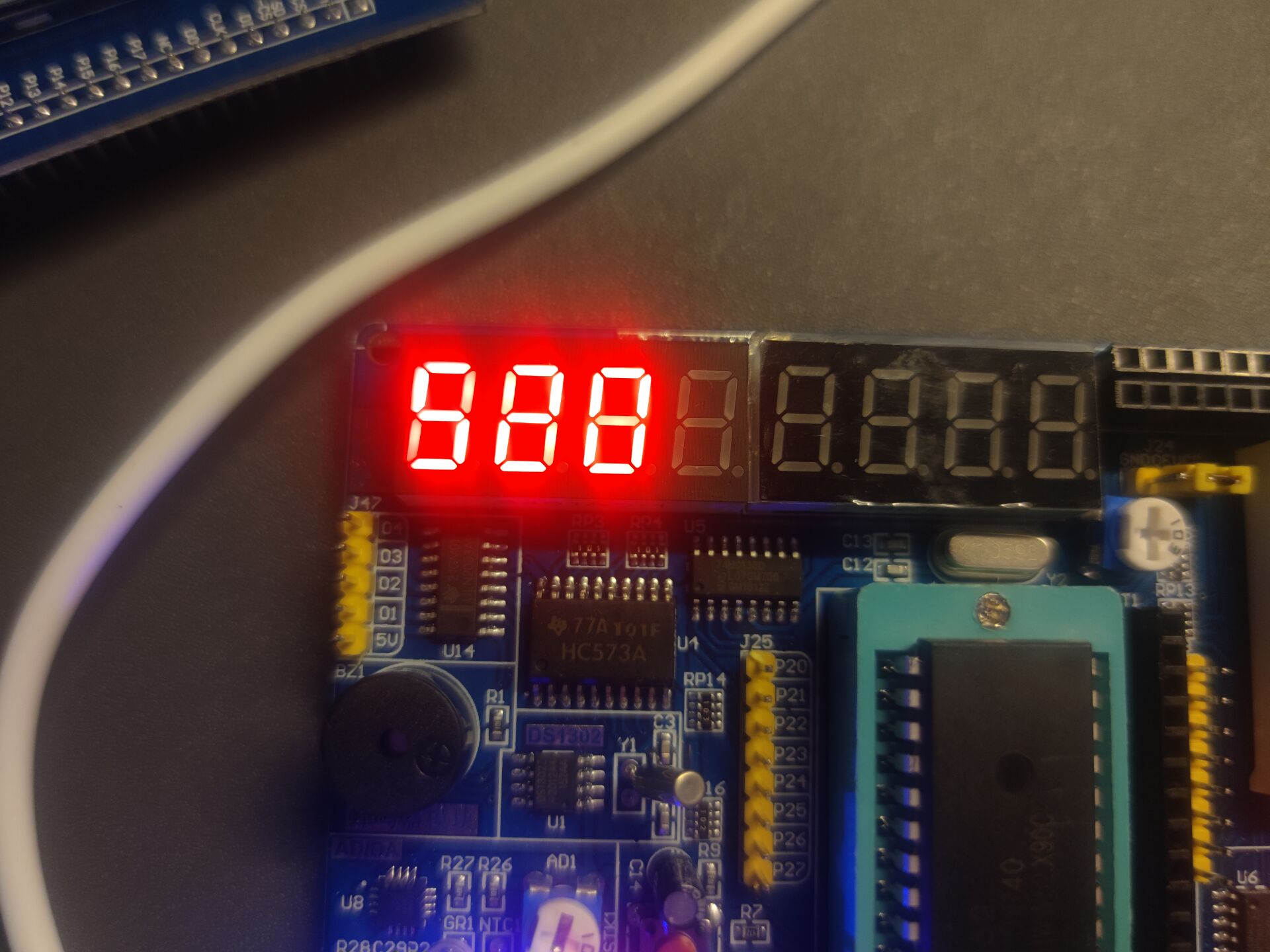
分析:
其实用摄像头将曝光跟快门时间调到最小可以获得以下图片,还是可以看得出来520.
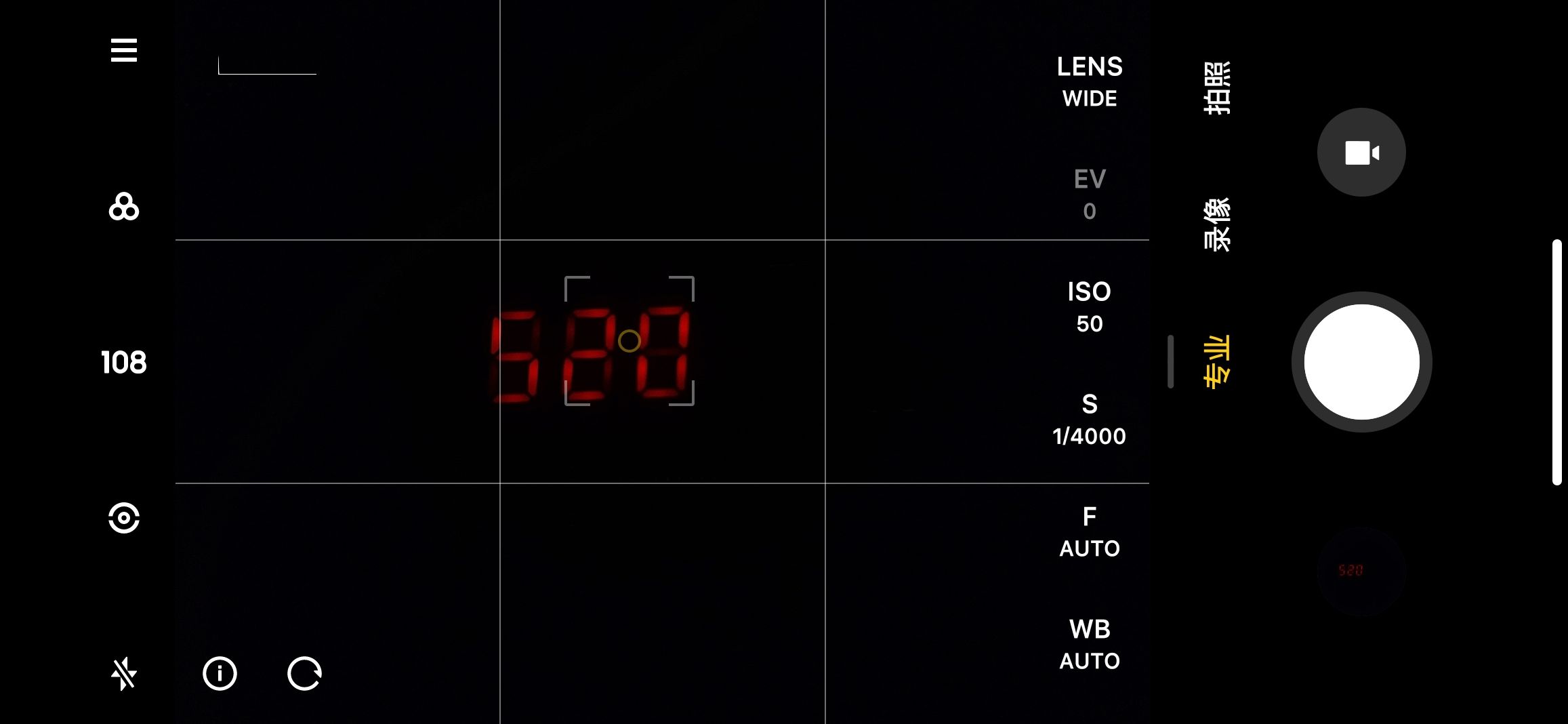
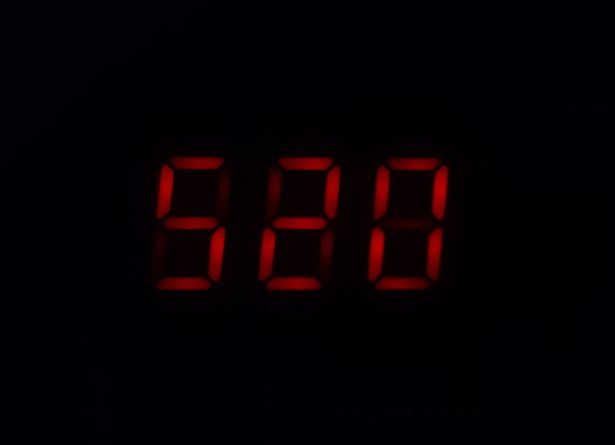
这个时候我们就需要消影,因为数码管在显示过程中,是不断地“位选 段选 位选 段选 位选 段选 位选 段选”,在段选与位选之间就会出现问题,这个时候下一个段选的数据还没有到,所以显示的是上一个的数据,所以我们需要加一个清零,“位选 段选 清零 位选 段选 清零 位选 段选 清零 位选 段选 清零”。
4.4 案例4:消影 清零

代码:
1 |
|
现象:
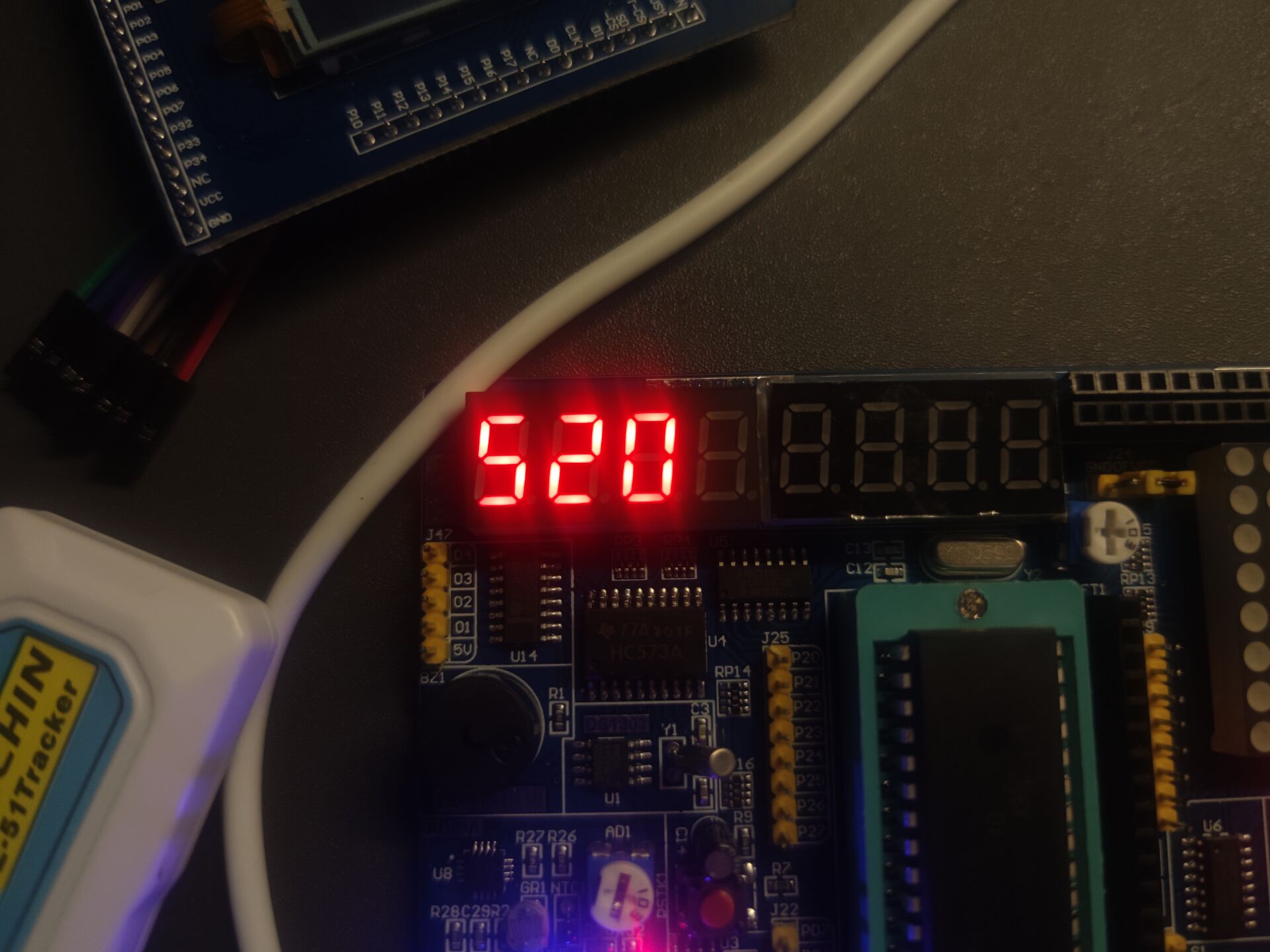
其实这个也是以1ms,频繁的闪烁,只不过延迟加在了niXieTube()函数里面,但是如果不加延迟,就清零,数码管会很暗。
4.5 余影
如果不清零,不加任何延时,使用下面代码可以清晰的看到余影
1 | void main(){ |
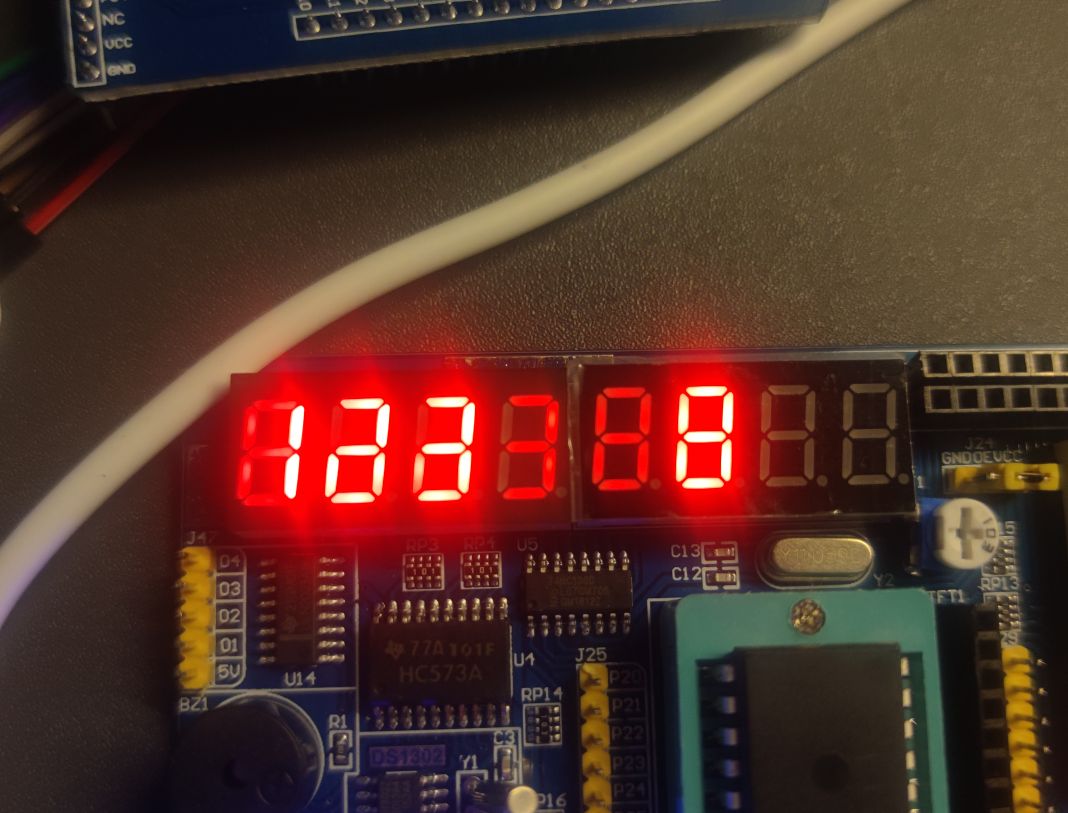
五、数码管驱动方式
- 单片机直接扫描:硬件设备简单,但会耗费大量的单片机CPU时间。
- 专用驱动芯片:内部自带显存、扫描电路,单片机只需告诉它显示什么即可。
